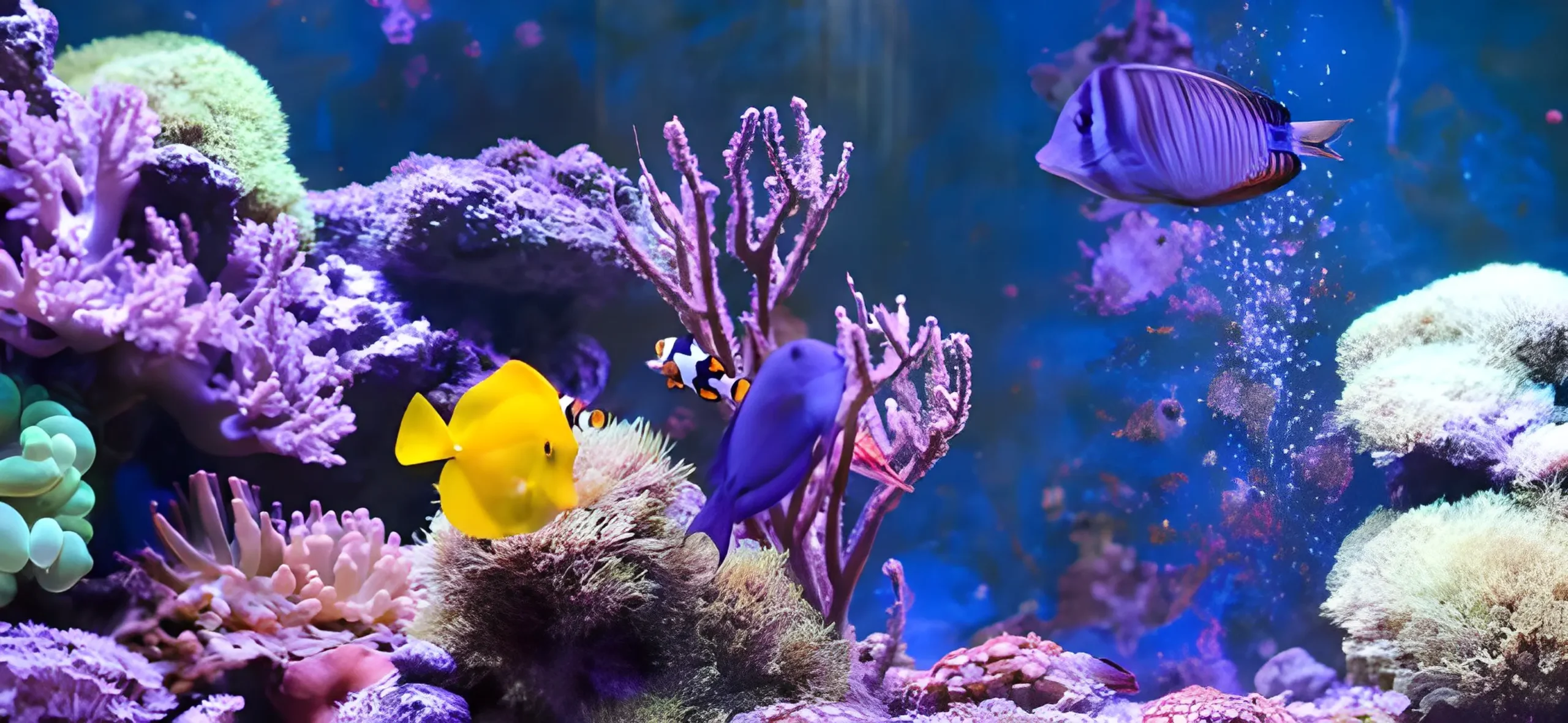Welcome to the fascinating world of saltwater tank reefing! Whether you are a seasoned hobbyist or a beginner, this complete guide will provide you with all the knowledge and tips you need to create a thriving and beautiful saltwater tank reef.
Maintaining a saltwater tank reef can be a rewarding experience, but it also requires careful planning and attention to detail. From selecting the right tank size and equipment to understanding water chemistry and properly acclimating your marine life, there is a lot to learn.
Benefits of having a saltwater tank reef
Having a saltwater tank reef in your home brings numerous benefits. Not only does it provide a beautiful and captivating display, but it also offers a therapeutic effect on the mind and body. The mesmerizing colors and movements of the fish and corals can help reduce stress and anxiety, creating a calming and peaceful environment.
In addition to the aesthetic value, saltwater tank reefs contribute to the conservation of marine life. By creating a small piece of the ocean in your own home, you are supporting the sustainability of various marine species. It also serves as an educational tool, allowing you to learn more about the delicate balance of the ocean ecosystem.
Essential equipment for saltwater tank reefing
Before diving into the world of saltwater tank reefing, it’s important to have the right equipment. The key components include a suitable tank, lighting system, filtration system, and a reliable protein skimmer. The tank size will depend on the space you have available and the type of marine life you wish to keep.
Lighting plays a crucial role in the growth and health of corals. LED lights are highly recommended for saltwater tank reefs as they provide the perfect spectrum of light for photosynthesis. Additionally, a quality filtration system is essential for maintaining water clarity and removing waste.
A protein skimmer is a vital piece of equipment that helps remove organic compounds and excess nutrients from the water. This prevents the build-up of harmful substances and promotes a healthy environment for your marine life.
Essential equipment for saltwater tank reefing
Setting up your saltwater tank reef
Setting up your saltwater tank reef requires careful planning and preparation. Begin by cleaning the tank thoroughly and ensuring it is free from any chemicals or residues. Next, add a layer of sand or substrate to the bottom of the tank, creating a natural environment for your marine life.
Once the substrate is in place, it’s time to add live rock. Live rock serves as both a decorative element and a natural biological filter. It provides a habitat for beneficial bacteria and other microorganisms, which help break down waste and maintain water quality.
After adding the live rock, it’s important to cycle the tank before introducing any fish or corals. This process allows the beneficial bacteria to establish and stabilize the nitrogen cycle, which is vital for maintaining water quality. Cycling can take several weeks, so it’s important to be patient during this stage.
Choosing the right fish and coral for your saltwater tank reef
Choosing the right fish and corals for your saltwater tank reef is crucial to creating a harmonious and thriving ecosystem. Research the specific requirements of each species and ensure they are compatible with one another. Consider factors such as tank size, water parameters, and feeding habits when selecting your marine life.
It’s important to strike a balance between fish and corals to create a visually appealing and ecologically sound reef. Some fish species, such as clownfish and gobies, are known to be compatible with corals and can coexist peacefully. However, certain fish species, such as triggerfish and puffers, may pose a threat to corals and should be avoided.
When choosing corals, consider their lighting and flow requirements. Some corals, such as soft corals, can thrive in low to moderate lighting, while others, such as stony corals, require high-intensity lighting. Additionally, ensure that the corals you choose are suitable for your tank size and water parameters.
Maintaining water quality in your saltwater tank reef
Maintaining water quality is crucial for the health and longevity of your saltwater tank reef. Regular water testing is essential to monitor parameters such as temperature, salinity, pH, ammonia, nitrite, and nitrate levels. Keeping these parameters within the appropriate range is vital for the well-being of your marine life.
Regular water changes are also important to remove excess nutrients and maintain water clarity. Aim for a 10-20% water change every two to four weeks, depending on the needs of your tank. Use high-quality salt mix to ensure proper mineral balance in the water.
In addition to water changes, it’s important to clean the tank and equipment regularly. Remove any debris or uneaten food from the tank, and clean the protein skimmer and filtration system as recommended by the manufacturer. This will help prevent the accumulation of harmful substances and maintain optimal water conditions.
Feeding and caring for the inhabitants of your saltwater tank reef
Proper feeding and care are essential for the health and well-being of the inhabitants of your saltwater tank reef. Provide a varied diet for your fish and corals, including high-quality commercial foods, frozen foods, and live foods. Research the specific dietary requirements of each species and ensure they are being met.
It’s important to feed your fish small amounts multiple times a day, rather than a large amount all at once. This helps prevent overfeeding and ensures that all fish have access to food. For corals, supplement their diet with reef-specific foods and provide adequate lighting and flow to support their growth.
Regular observation of your marine life is also important to detect any signs of illness or stress. Watch for changes in behavior, appetite, or appearance, and take appropriate action if necessary. Consult with a knowledgeable expert if you notice any unusual symptoms or concerns.
Common challenges and troubleshooting in saltwater tank reefing
Saltwater tank reefing can present various challenges, but with proper knowledge and troubleshooting, they can be overcome. One common challenge is algae growth, which can be controlled by maintaining proper nutrient levels, implementing a suitable lighting schedule, and utilizing algae-eating fish or invertebrates.
Another challenge is maintaining stable water parameters. Fluctuations in temperature, salinity, or pH can be harmful to your marine life. Ensure that your equipment is functioning properly and regularly monitor and adjust the parameters as needed.
Live rock can sometimes become a source of nitrate and phosphate buildup. To combat this, consider using a phosphate remover or adding additional live rock to help absorb excess nutrients. Regular water changes and maintaining a balanced feeding regimen can also help prevent nutrient imbalances.
Advanced techniques in saltwater tank reefing
Once you have mastered the basics of saltwater tank reefing, you may be interested in exploring advanced techniques. One such technique is coral propagation, which involves growing new corals from existing colonies. This allows you to expand your reef and share your corals with other enthusiasts.
Another advanced technique is creating a refugium, which is a separate compartment within your tank that promotes the growth of beneficial microorganisms. A refugium can help maintain water quality by removing excess nutrients and providing a natural food source for your tank inhabitants.
Additionally, consider experimenting with different types of filtration systems, such as a protein skimmer or a calcium reactor, to further enhance water quality and stability. These advanced techniques require careful research and consideration, so be sure to gather sufficient knowledge and seek guidance from experienced reefers.
Conclusion and recommended resources for further information
Creating and maintaining a saltwater tank reef is a rewarding and fulfilling hobby that allows you to bring the wonders of the ocean into your home. By following the tips and advice in this guide, you can create a thriving and beautiful reef ecosystem that will captivate and inspire.
Remember, patience and dedication are key when it comes to saltwater tank reefing. Take the time to research and understand the needs of your marine life, and be vigilant in monitoring water quality and parameters. With proper care and attention, your saltwater tank reef will flourish and provide endless enjoyment.
For further information and resources on saltwater tank reefing, consider joining online forums and communities dedicated to reef keeping. There are also numerous books and websites that provide in-depth information on various aspects of this hobby. Happy reefing!

